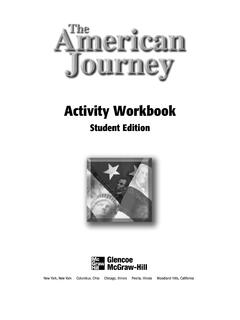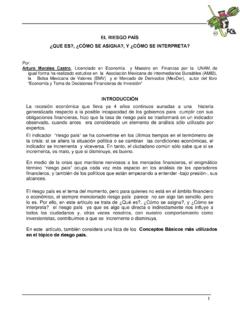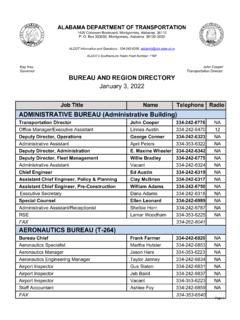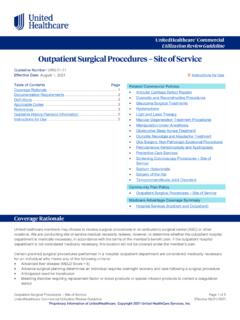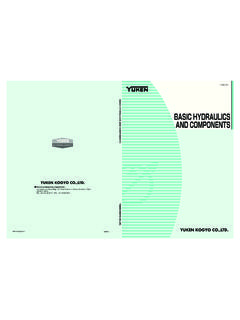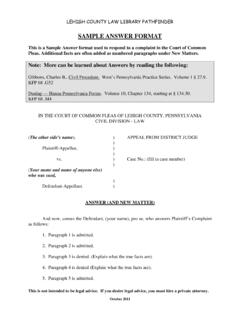Transcription of Chapter 19: The Growth of Industry, 1865-1914
1 554 The Growth of Industry1865 1914 Why It MattersInnovations in technology and new business combinations helped the United Statesdevelop into a great industrial power. By the year 1900, United States industrial production was the greatest in the Impact TodayInnovations in technology and economics have transformed national and regionaleconomies into a global economy. Developments in transportation and communica-tions have made international trade an economic driving force in today s American JourneyVideoThe Chapter 19 video, The Builders of OurRailroads, examines the life and hardships that immigrants faced as workers on the Canada becomes self-governing dominionA.
2 Johnson1865 18691879 Edison inventselectric light186018701880 Grant1869 1877 Hayes1877 1881 Garfield1881 Arthur1881 18851876 Bell patentsthe telephone1886 Trade unionsform AFLCHAPTER 19 The Growth of Industry1869 First transcontinentalrailroad completed1870 Rockefeller organizes Standard Oil Company5551896 Ford s firstauto built1908 Ford introducesModel T1895 Marconi sends first radio signals Lumi re brothers introducemotion pictures1901 Australia becomesself-governingdominionHISTORYC hapter OverviewVisit on Chapter 19 Chapter Overviewsto pre-view Chapter Ironworkers Noontimeby Thomas Pollock AnshutzFactoryworkers in Wheeling, West Virginia, take their noontime 19 The Growth of Industry18901900 Cleveland1885 1889 Cleveland1893 1897B.
3 Harrison1889 1893 McKinley1897 1901 Roosevelt1901 19091890 Sherman AntitrustAct passed1903 Wright brothersfly first motorizedairplane1907 New Zealand becomesself-governing dominionInventions1"Step 1 Fold two sheets of paper in half from topto bottom. Cut the papers in half along the Main Ideas Study FoldableMakethis foldable to describe the Growth of industryin the United States in the late and WritingAs you read, write whatyou learn about the developments of industryunder each appropriate 2 Fold each of the four papers in half fromtop to 3 On each folded paper, make a cut1 inch from the side on the top 4 Place the folded papers one on top of theother.
4 Staple the four sections together and labeleach of the tabs Railroads, Inventions, BigBusiness, and Industrial alongthe 1 inch fromthe edge throughthe top flap transcontinentalrailroad completed1880sStandard width for railroad tracks adopted1883 Northern PacificRailroad opens1890sFive railway linescross the countryMain IdeaA growing transportation networkspread people, products, and infor-mation across the Termsconsolidation, standard gauge,rebate, poolReading StrategyAnalyzing InformationAs you readthe section, complete a diagram likethe one shown by describing the contributions of the railroad to thegrowth of to Learn how the railroad barons madehuge fortunes.
5 How the national railroad systemchanged the American ThemeGeography and HistoryAs the rail-roads expanded, the centers of someindustries Lead the WayRugged construction gangs labored on the Union Pacific and other railways duringthe transportation boom of the late 1800s. The chorus of a favorite song told of thehard work of the tarriers, or drillers:556 Chapter 19 The Growth of IndustryThe role of the railroadAnd drill, ye tarriers, drill!Drill, ye tarriers, drill!For it s work all day for sugar in your tay,Down behind of the railway and,Drill, ye tarriers, drill!And blast!And fire!Railroad ExpansionDuring the Civil War, trains carried troops, weapons, and supplies to the superior railroad system of the North played an important role in its victoryover the South.
6 In the decades after the war, railroads became a driving forcebehind America s economic Growth . The first transcontinental railroad, com-pleted in 1869, was soon followed by others. By the 1890s five railway linescrossed the country, and hundreds of smaller lines branched off from them. ThePreview of EventsGuide to Reading 1860 1870 1880 1890 Train song sheet557 Chapter 19 The Growth of Industryrailroad system grew rapidly. In 1860 the UnitedStates had about 30,000 miles (48,270 km) of rail-road track. By 1900, the nation had nearly 250,000miles (402,250 km) of songs such as John Henry and I veBeen Working on the Railroad were popularamong those who labored to build these miles oftrack.
7 They sang: I ve been working on the railroad,All the live-long day,I've been working on the railroad,Just to pass the time away. The expansion of the railroad system wasaccompanied by consolidation the practice ofcombining separate companies in the railroad companies expanded by buyingsmaller companies or by driving them out ofbusiness. Consolidation made the large compa-nies more efficient. After consolidation, a fewpowerful individuals known as railroad baronscontrolled the nation s rail BaronsNew Yorker Cornelius Vanderbilt, one of thefirst railroad barons, gained control of the NewYork Central line and then made a fortune by con-solidating several companies.
8 His railroad empirestretched from New York City to the Great railroad baron, James J. Hill, builtthe Great Northern line between Minnesotaand Washington State. Until his death in 1916,Hill continued building and directing his ever-growing business empire. Collis P. Huntington,Leland Stanford, and two other partnersfounded the Central Pacific, which connectedCalifornia and Utah. The railroad barons were aggressive andcompetitive. They lived in an age when fewlaws had been passed to regulate business, andsome of their methods were highly question-able. Nevertheless, the railroad barons playedan important part in building the nation stransportation did consolidationmean for many small companies?
9 EconomicsRailroads Stimulate the EconomyThe fast-growing national rail system creatednew economic links in the country. The railroadscarried raw materials such as iron ore, coal, andtimber to factories. They also carried manufac-tured goods from factories to markets and trans-ported produce from farming areas to the national railroad system encouraged theexpanding economy in many other ways. Atfirst the demand for iron tracks and locomotiveshelped the iron mining and processing indus-tries grow. Around 1880 railroad companiesbegan using tracks of steel a metal madestronger by adding carbon and other elementsto refined iron.
10 The use of steel in railroad tracksstimulated America s steel railroads also helped other industries tothrive. The lumber industry, which suppliedwood for railway ties, and the coal Industry, which provided fuel for locomotives, sawextraordinary Growth . In addition railroad com-panies provided work for thousands of peoplewho laid tracks and built stations and for thosewho manufactured railway cars and the RailroadsIncreased use made it necessary for railroadsto expand and unify their systems. While rail-roads were being built across the country, differ-ent lines used rails of different gauges, or a result trains of one line could not useanother line s tracks.




